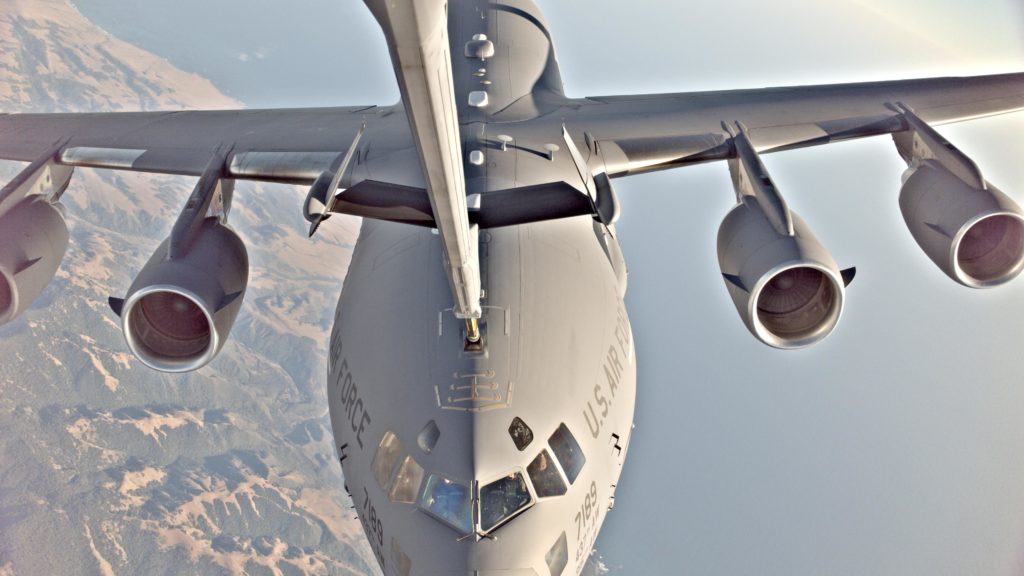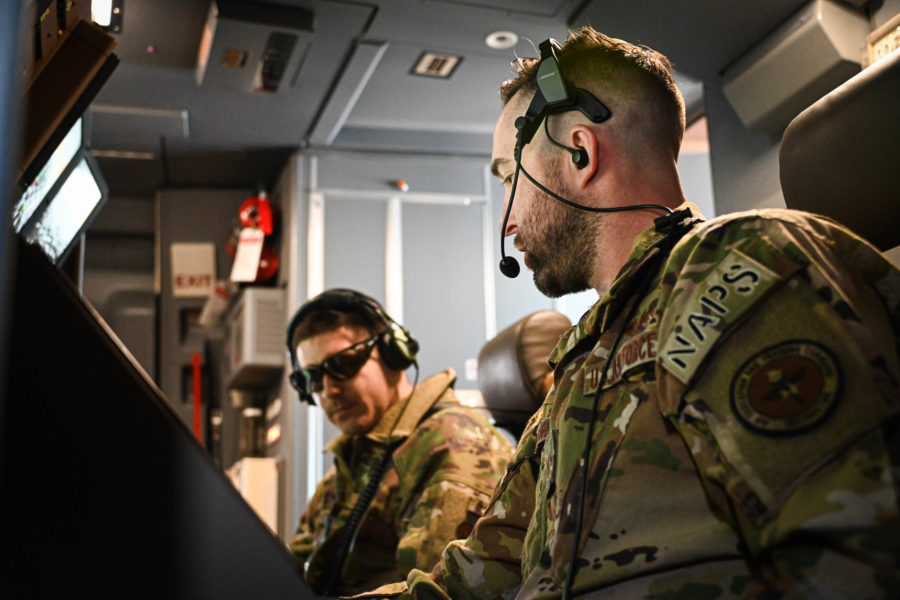The KC-46’s improved Remote Vision System, dubbed RVS 2.0, is “likely” to be delayed into 2026, the Air Force’s top acquisition executive said March 12.
Air Force assistant secretary for acquisition, technology, and logistics Andrew P. Hunter also said the service is poised for progress on two other refueling tanker projects: the KC-135 replacement, previously called the bridge tanker or “KC-Y,” and the Next-Generation Aerial refueling System, or NGAS.
On KC-46, Hunter cited “schedule pressure” and “the FAA airworthiness certification process” as factors weighing on the Boeing tanker.
Rep. Donald Norcross (D-N.J.) asked Hunter as he testified March 12 if the timeline for RVS 2.0 was still on track—the latest projection was to start fielding in October 2025.
Hunter hedged: “I cannot guarantee you that we would be in a position to field in ’25,” he said, referring to the revised delivery date set in the fall of 2022. “Maybe ’26. That is actually likely.” Hunter promised to get back to the lawmaker “with a more detailed timeline for where we see the state of play of fielding.”
An Air Force spokeswoman declined to offer further detail and Boeing did not immediately reply to a request for comment.
The KC-46’s Remote Vision System is necessary because in this tanker, the boom operator cannot look directly out the back, as in conventional tankers. Instead, the operator views the connection on a computer screen. But the original RVS was compromised in certain lighting situations, causing operators to bang the rigid, telescoping refueling probe into other aircraft while trying to connect. The black-and-white display washes out or blacks out in direct sunlight, and operators struggled with depth perception. The issue was particularly problematic for low-observable aircraft, such as the F-35 and F-22, because accidental damage from the probe could compromise the fighters’ radar-absorbing properties.
Boeing and the Air Force struck a deal to fix the problem in 2020, and in December 2022 Boeing offered a sneak peak of RVS 2.0’s upgraded cameras and color display to reporters. But progress has been slower than expected, apparently, and while the Air Force and Boeing have “made a ton of progress” toward gaining FAA certification, there is still more work to do, Hunter said.

Air Force and Boeing leaders have called RVS 2.0 a “quantum leap” forward in capability, including potential automation of the process, Hunter said.
“I actually recently had the opportunity to fly on a KC-46 and observe how the crew operates, both in the flying of the aircraft and also with the boom operations,” he said. “And I think there is a substantial opportunity to leverage autonomy in both areas of the airplane. Interestingly enough, one of my takeaways was that the RVS 2.0 is a key enabler for potentially a greater degree of autonomy in the refueling operation itself and the boom operations because the greater clarity of the camera system will support a higher degree of high-fidelity automation in that process.”
NGAS and KC-135 Recap
The Air Force, meanwhile, continues to pursue two other refueling tanker programs. The KC-135 Recapitalization Program seeks to ensure “continuous tanker recapitalization” between the end of KC-46 procurement and the beginning of the next-generation NGAS program.
He said the Air Force’s request for information on an interim tanker program yielded responses from Boeing and Airbus, and the service is now crafting its acquisition strategy for those tankers. The Air Force asked for $13.7 million for this effort in fiscal 2025, when it anticipates issuing a request for proposals. Spending would ramp up to $188.6 million in 2026 and $243.7 million in 2027 under present plans.
Exactly how many tankers that might buy is still unclear—“the total number of Tanker Recap aircraft procured will be influenced by the FY 2024 NGAS Analysis of Alternatives and dependent on NGAS’s first delivery,” budget documents state.
The 2025 budget includes $7 million “to complete the AOA, do some of the early stage modeling and simulation work that will support the AOA and also stand up the future tanker program office,” Hunter said. That office “will manage both NGAS and the Tanker Recapitalization effort,” he added.
Hunter declined to offer details on NGAS, besides acknowledging that stealth is one consideration for the aircraft. “I think it’s a huge element of the analysis of alternatives, to look at, what are the different technologies that can help us do refueling in a contested environment,” he said. “And what are the different ways to solve that very challenging operational problem? …. We’re leveraging the expertise of our force, we’re leveraging modeling and simulation to help us think through what might work to help us enable that.”
Hunter also said NGAS will draw upon the Next-Generation Air Dominance fighter program. “These programs are closely related, both in their concept—how they operate within the force design—and also, I’m going to be pleased to tell you, in the way that they’re functioning and the way that they’re working together,” Hunter said.
NGAD, the planned sixth-generation fighter, will assuredly be stealthy. Hunter said NGAS will also draw upon the Air Force’s acquisition experience with NGAD. It will “leverage expertise from the agile development office to help them get started and take what I call the next-gen approach to our acquisition programs,” Hunter said. “We have large vendor pools, continuous competition, and iterations of capability that we can deploy in a relatively good timeframe.”
